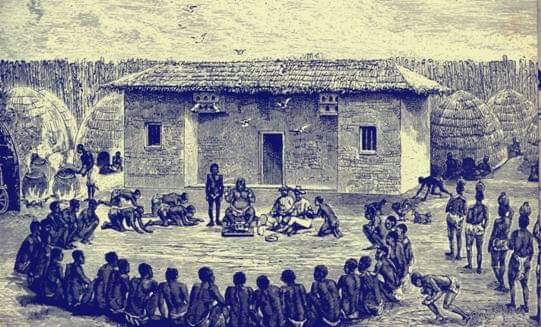By Thomas Sibanda
After the conclusion of the Inxwala national ceremony, people went back to their respective villages. After a week or two, the king performed the ukuchinsa /dolo qina ceremony.
Citizens of the Ndebele state were prohibited from harvesting their crops until the ukuchinsa ceremony was conducted. This was usually around January or February, when the first crops started to appear.
The king was the first to partake of the first crops in the kingdom. Anyone who broke this rule was punished by death.Izinyanga -traditional doctors gathered the first crops like amakhomane, marrows and mixed them with medicines. After that the king would eat the first fruits.
This ritual gave the king spiritual strength and as such he commanded the respect of his subjects. After completing the ritual, the king would at times throw amakhomane at groups of soldiers in the royal quarters who often stampeded to get a share of the first fruits.
5. Ukuchinsa was not a national event. Once it was announced that the king had conducted ukuchinsa, a date was set by the leaders in all provinces for ukuchinsa to be conducted. People were given a day to prepare for the ceremony.
A night before the ceremony, men were forbidden to sleep with their wives. They would instead sleep together and rise whilst the morning star, indonsakusa was still visible in the sky. Wearing only their kilts round their waists, they assembled at the common meeting place.
The meeting place was usually in the middle of their kraal, and, at a given signal, they followed inyanga out of the kraal and went off to join the people of their clan from other kraals
Upon arriving at a pool of water, the inyanga poured some medicine, and they went in and splashed about. When they had come out and reclothed themselves, they walked to their clan meeting place.
While doing so, they were not allowed to pick up any dead branches from the trees as they passed, but they were allowed to pick up any dead wood from the ground.
They arrived, each man holding two or three dead branches in his hand, and these they threw down in a chosen place. Some young men were told to make a fire by rubbing two sticks together, and six stones were brought with which to make cooking places.
While the fire was being lighted the inyanga prepared his medicine which he mixed with some imfe, sweet reed, some umumbu, mealies, and ikhomane, a marrow.
Having obtained a cooking pot and large potsherd suitable for use as a frying pan, he put some mixture he had prepared into each pot. Having added some water, he closed the mouth of the pot and left it to cook while he fried the mixture in the potsherd.
Thick black smoke ascended from it, and this was inhaled by every male present in turn by means of hollow reeds previously procured for the purpose.
This caused the men to cough continuously for a while. The ashes were then taken out, ground to a powder and mixed with fresh milk, which was boiled. Then each man touched the milk with his fingers and brought them to his lips.
This he did three times, repeating the act on the opposite side of the pot. Then the lid was lifted from the other pot. One by one the men approached, and each took a fragment of each of the three ingredients.
In turn, slapping himself on the back of the arms and legs as he did so, to make himself a good soldier. He spat into the fire each time, and, as before, repeated the ritual on the other side of the fire.
As they finished, they went one by one to the entrance of the kraal and spat again there. As every man had to go through this ceremony, it sometimes took days to get through. In conclusion, the inyanga sprinkled them and bade them go home and eat of the first fruits.
The medicine used for sprinkling was called isigcelo. The fire was extinguished by the men who trampled on it, and the ashes were scattered. The people were then at liberty to return home, and great feastings took place.

